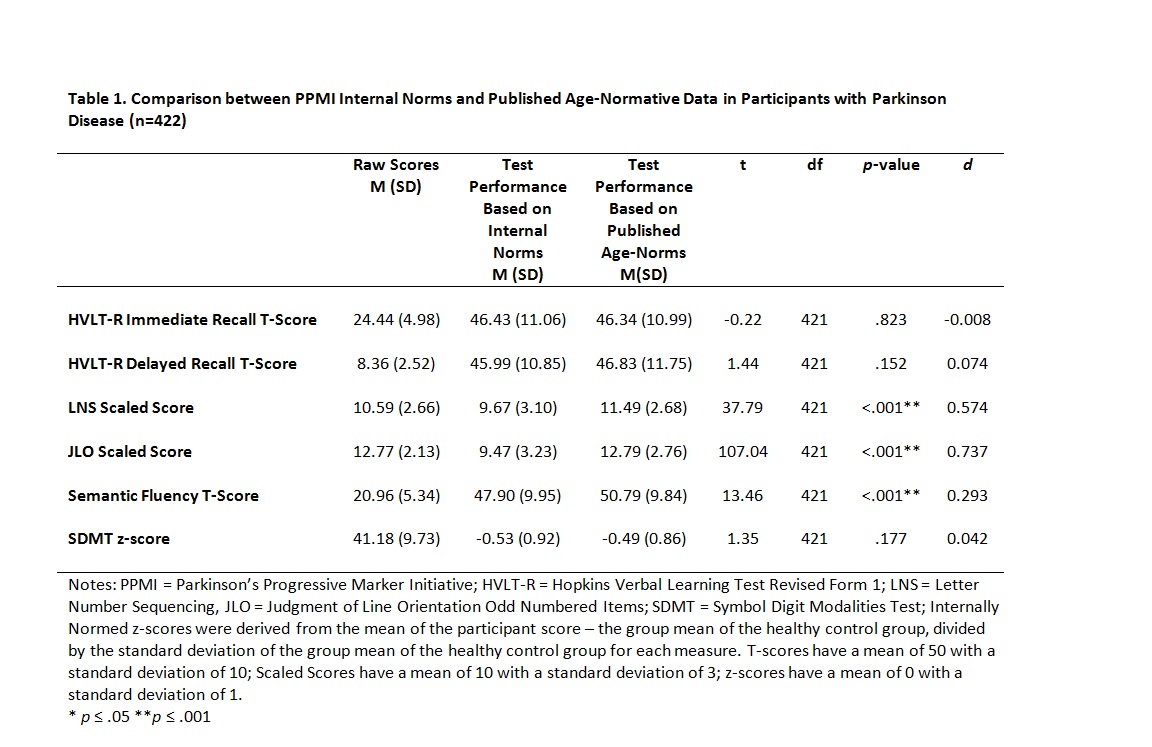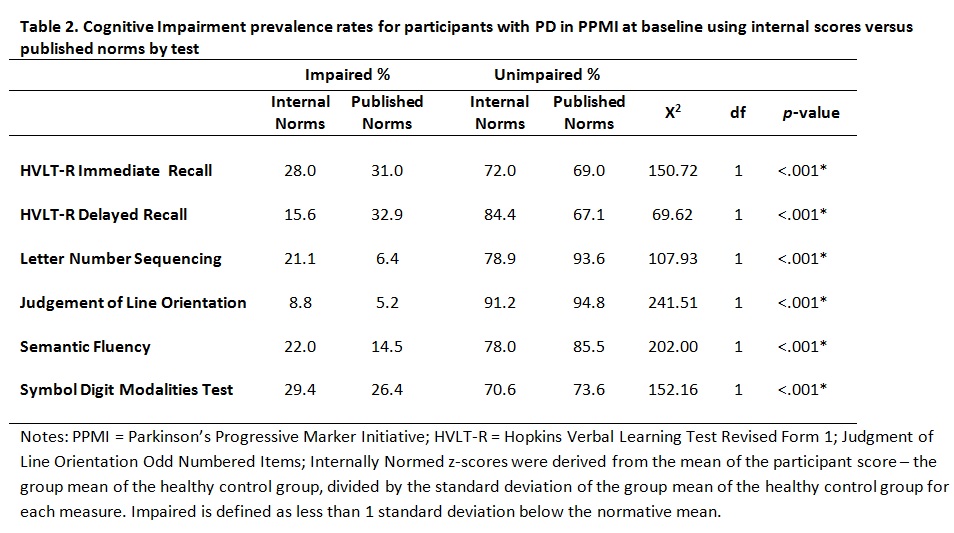Session Information
Date: Wednesday, June 7, 2017
Session Title: Parkinson's Disease: Cognition
Session Time: 1:15pm-2:45pm
Location: Exhibit Hall C
Objective: It is important to understand underlying psychometric properties of the cognitive tests included in the Parkinson’s Progression Markers Initiative (PPMI) dataset to interpret the results accurately. This project examines impact of different methods of determining normative or standardized cognitive data on research outcomes in PPMI.
Background: There are several approaches to analyzing cognitive data. The tests in PPMI are commonly used in clinical neuropsychological evaluations with age-normative data [1], as many cognitive abilities change with age. Research strategies have also included utilization of raw scores controlling for age or creation of internal standardized scores derived from PPMI control group cognitive data [2].
Methods: Data were obtained from PPMI in January 2017. Baseline data from 422 participants with Parkinson Disease (PD) were included [Age=61.7(9.7), Education=15.6(3.0)]. Tests included Hopkins Verbal Learning Test-Revised, Letter Number Sequencing (LNS), Judgment of Line Orientation (JLO), Symbol-Digit Modalities Test, and Category Fluency. Internal norms were calculated for each participant using the group mean and standard deviation of the PPMI control group. Paired-sample t-tests were conducted comparing internal norms and published age-norms for each neuropsychological test. Chi-squares were conducted to evaluate the proportion of individuals with impairment (<1 SD below the mean).
Results: Table 1 provides comparison of internal norms vs. published norms. [table1] Significant differences were found between internal and published norms for LNS, JLO, and semantic fluency. The methodologies for norming the cognitive data in PPMI result in different proportions of individuals identified with cognitive impairment at baseline. [table2]
Conclusions: Among participants with PD in PPMI, there are differences in standardized cognitive scores depending upon the normative group that is used. These differences impacted impairment rates across cognitive measures and the use of internal norms resulted in lower standardized scores than age-norms with the exception of memory tests. Such findings indicate that standardization approaches are not interchangeable. Selection of appropriate normative comparison groups requires careful consideration as such decisions can impact both research and clinical interpretations of cognitive data.
References: [1] Weintraub D, Simuni T, Caspell-Garcia C, et al. Cognitive performance and neuropsychiatric symptoms in early, untreated Parkinson’s disease. Mov Disord. 2015;30:919-927.
[2] Pereira JB, Svenningsson P, Weintrab D, et al. Initial cognitive decline is associated with cortical thinning early Parkinson disease. Neurology. 2014;82:2017-2025.
To cite this abstract in AMA style:
K. Wyman-Chick, M. Barrett, P. Martin, C. Manning, S. Sperling. Cognitive data in the Parkinson’s Progression Markers Initiative: Comparison of normative data approaches [abstract]. Mov Disord. 2017; 32 (suppl 2). https://www.mdsabstracts.org/abstract/cognitive-data-in-the-parkinsons-progression-markers-initiative-comparison-of-normative-data-approaches/. Accessed December 21, 2025.« Back to 2017 International Congress
MDS Abstracts - https://www.mdsabstracts.org/abstract/cognitive-data-in-the-parkinsons-progression-markers-initiative-comparison-of-normative-data-approaches/


